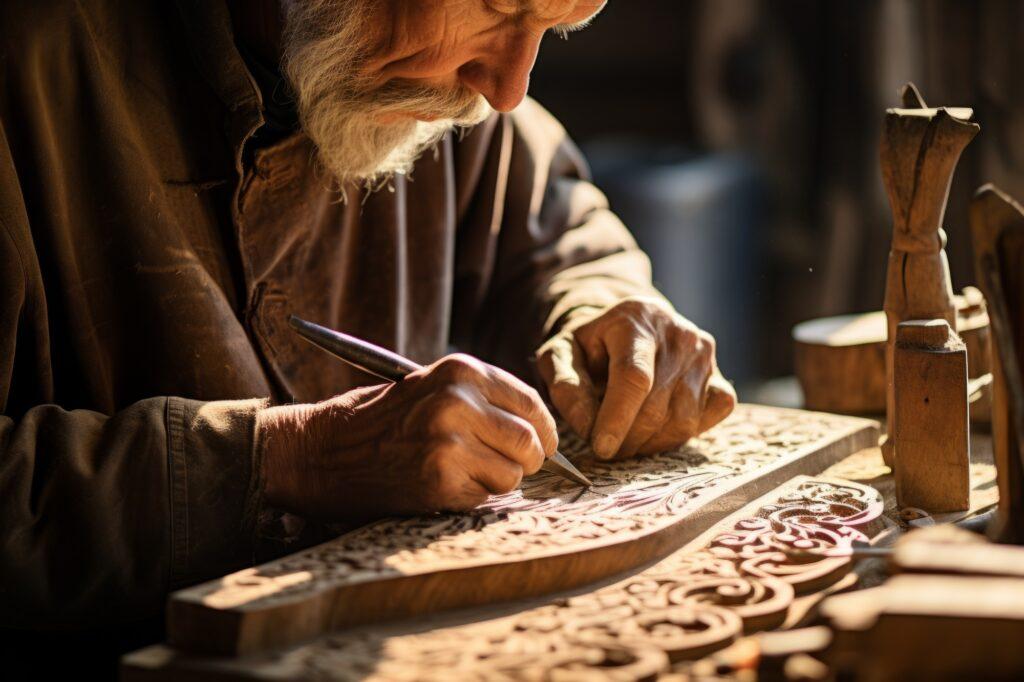Craft events continue to inspire and entertain people of all ages. They bring together artisans and craft lovers to celebrate handcrafted goods. These events celebrate the individuality and originality of artists.
Ah, the smell of freshly carved wood, the soft click-clack of crochet needles, and the subtle joy of finding the perfect gift at a craft show. It’s the kind of experience that makes you want to clear your weekend calendar and dive head-first into a world of DIY wonders and handcrafted treasures. Whether you’re new in town or just lining up plans for the weekend, local craft events offer something uniquely rewarding. They’re not just a “thing to do around” your city; they’re a crucial lifeline for local artisans and a vibrant splash of culture in an otherwise monochrome world.
Visitors can immerse themselves in the handcrafted items on display and appreciate the outstanding works of renowned artists. Craft fairs honor traditional and cultural heritage. They preserve skills and knowledge, foster creativity, and encourage attendees to explore various arts and crafts. Meanwhile, workshops and demonstrations help individuals learn new things.
Events showcasing crafts are crucial for local economies, promoting ethical and sustainable products. They support livelihoods while providing high-quality items. Aside from cultivating a sense of community, craft events promote eco-friendly practices. Many artisans use locally produced materials, reducing their carbon footprint.
Visitors can admire works created by artists who have put their hearts and souls into them. Craft events inspire innovation, encouraging artisans to experiment with new materials, techniques, and designs. This article helps explore how craft events celebrate and nurture human ingenuity and creativity.

The Economics of Craft Events
At first glance, a craft event might look like a kaleidoscope of colors and creativity, a place where you can pick up some holiday decor, eat cookies from food trucks, and perhaps buy a vintage trinket or two. However, it’s not just a place to stroll and shop. The economics of craft events are complex and significant, impacting local artisans, communities, and even the broader market. In this section, we’ll look at how these events are not just a cultural happening but also an essential economic resource.
When an artisan pays for a booth at a craft event, they’re investing in much more than just a table to display their paint or crochet work. For many artists, especially those just starting, these events serve as an invaluable fundraising platform. Picture this: instead of hosting a one-time dinner event to showcase their creations, artisans get to meet hundreds, if not thousands, of potential customers strolling by. It’s a direct, face-to-face sales opportunity that an online store or a static indoor market simply can’t replicate. It’s a chance to connect, share stories, and, please let’s not forget, make sales.
You can’t have a successful craft event without a community that supports it. Often organized as an annual fall happening or an upcoming seasonal affair, these events draw crowds, and not just of the shopper variety. Food trucks, musicians, and even local charities often participate. The economic ripples go beyond the event itself: people may grab dinner at a nearby restaurant, fill up gas, or buy additional supplies for the day. Imagine the local mom-and-pop street shop witnessing increased foot traffic simply because a craft event is happening around the corner. And let’s not overlook the potential tax revenue for the town or city hosting the event. In short, the economic impact is broad and beneficial, a win-win for everyone involved.

How Craft Events Support Local Artisans
Why do these events matter, you ask? It’s not just about a great way to spend a Sunday afternoon or an early start on your Christmas shopping or getting some great DIY Christmas decor ideas. Craft events serve as a potent fundraiser for independent artists and a space where creativity flourishes. Let me tell you, there’s magic in those crowded aisles and pop-up stalls—magic that doesn’t just delight the senses but boosts the local economy and enriches our community in more ways than one.
So buckle up, because you’re about to find out just how significant these events are. You’ll learn why browsing through local craft shows is more than an afternoon jaunt—it’s a journey into the soul of your community, offering a genuine connection that you just can’t replicate through a screen or in a big-box store.
If you’re a home design and decor enthusiast, prepare to meet your new obsession. These craft events might just be the best-kept secret for discovering unique pieces that reflect not just a trend but the soul of an artisan. And let’s be honest, who doesn’t want their home to be filled with soul?
Stay with me as we explore the enduring allure of craft events, the unsung heroes of local artisans, and the multitude of ways in which they elevate our daily lives and local communities. After all, supporting local artisans is like adding a sprinkle of fairy dust to your life—only, in this case, the fairy dust is real, and it comes in the form of awe-inspiring artistry and craftsmanship. Ready to dive in?
Fostering Community Connection
Supporting local artisans helps cultivate a strong sense of community connection. This connection celebrates local talent and creativity. It also brings people together through a shared appreciation for their unique culture.
Imagine a charming town hosting a yearly craft fair showcasing the talents of local painters, sculptors, and artisans. As residents and visitors gather to witness these creations, engaging conversations revolve around the stories and traditions that inspire art. This interaction encourages residents to appreciate their community’s unique talents.
Craft events bring people together to appreciate artisans’ talents and creations, fostering new connections and strengthening existing ones.
Boosting The Local Economy
Organizing events promoting and showcasing the work of local artisans can positively impact the local economy. Artists can generate income within their community with a platform to exhibit and sell their products. The event can also bring a multiplier effect, helping local businesses serve event attendees.
For instance, imagine a vibrant farmers’ market bustling with activity, where you can find an array of stalls offering fresh produce and handcrafted goods. Visitors may also buy from nearby food vendors, cafes, and shops while exploring artisanal offerings. The increase in foot traffic and spending contributes to the community’s financial well-being.
Craft events can also attract visitors from nearby areas, boosting local tourism. Aside from exploring the event, visitors support restaurants and hotels. Attracting more visitors can increase the community’s revenue, strengthening its economy.
Nurturing Artistic Skills
Craft events provide local artisans valuable opportunities to cultivate and enhance their artistic skills. Participating artisans can gain exposure to various techniques, styles, and materials. They may discover new things from their peers and receive valuable feedback from attendees, helping them improve their craft.
For example, let’s consider a pottery artist participating in a craft event. They can engage with fellow potters who may possess innovative techniques. Sharing knowledge can enhance the quality of their work. Artists can also gain insights into local preferences and tastes when they receive feedback from event attendees, benefiting their future creative endeavors.
Craft events often feature workshops or demonstrations where skilled artisans share their knowledge and expertise with the community. Sharing expertise can inspire younger generations to explore and engage in creative pursuits. This way, craft events can sustain the community’s artisanal traditions.
Encouraging Sustainability
Supporting local artisans through craft events aligns with the principles of sustainability. Local artisans often prioritize environmentally friendly practices and use locally sourced materials. Showcasing these artisans can help promote sustainable living.
Suppose a craft fair highlights artisans specializing in repurposed fashion. They can show attendees that unwanted materials can turn into beautiful apparel. Their creations emphasize the value of recycling and reuse in the community. These projects can help minimize waste and promote awareness about eco-friendly practices.
As awareness grows about supporting local businesses and protecting the environment, people can appreciate locally sourced and sustainable products more. It could lead them to make better choices. Hence, craft events promote sustainability and positive change in the community.
Preserving Cultural Heritage
Craft events are essential for preserving and celebrating a community’s cultural heritage. Local artisans often draw inspiration from traditional art forms and historical customs. They preserve traditions by passing them on at craft events.
Imagine attending a craft event celebrating indigenous artisans and highlighting their stories through traditional crafts. Engaging with artisans can help you learn about their customs and appreciate the community’s cultural heritage. Preserving cultural heritage enhances community identity and fosters pride.
Aside from preserving heritage and promoting cultural exchange, local artisans sharing customs and traditions fosters tolerance, understanding, and appreciation for cultural diversity.
Fostering Entrepreneurship
Craft events provide a valuable platform for local artisans to launch and expand their businesses. These events allow artisans to showcase their products to a broader audience and connect with potential customers. This exposure allows them to gauge the market response to their products and improve their business skills.
For instance, consider a skilled jewelry designer specializing in unique handmade pieces. They can start selling their jewelry at local craft fairs to engage with customers and promote their brand. Positive feedback and increased sales can inspire them to expand, like creating an online store or opening a physical retail space.
Craft events provide valuable experience for aspiring entrepreneurs. They can learn about marketing strategies, pricing techniques, and customer preferences. Small business owners are crucial in the economic development of their community. They create jobs and stimulate local commerce.
Conclusion
Supporting local artisans at craft events extends beyond creating and selling art. These events foster belonging, pride, economic growth, artistic skills, and sustainability. In addition, local artists play a crucial role in preserving cultural heritage and promoting entrepreneurship. Celebrating them can boost community vitality.
On the other hand, when you go to a local craft event in the future, remember that your purchase isn’t just about buying a piece of art. Investing in your community is a way to contribute to its well-being and future.

